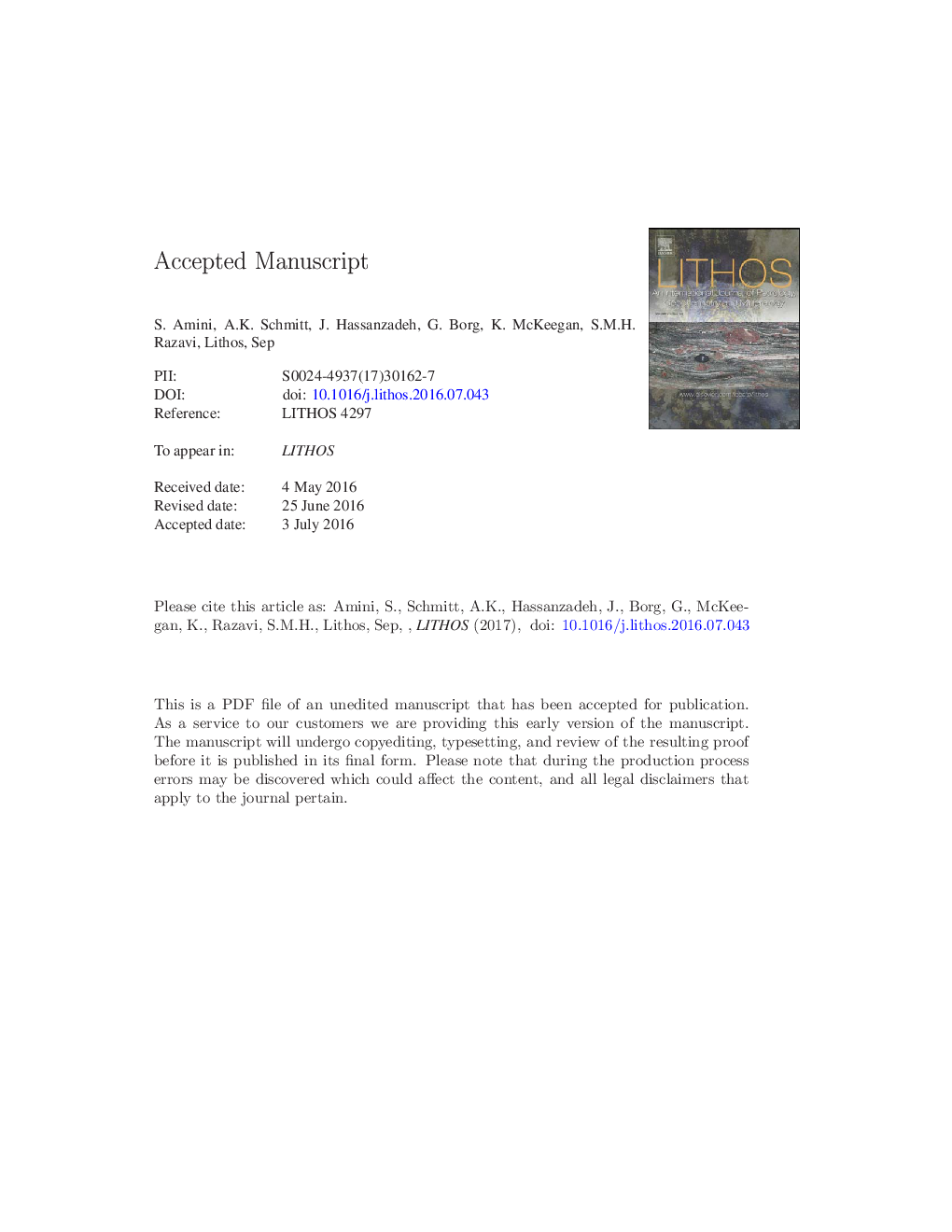| کد مقاله | کد نشریه | سال انتشار | مقاله انگلیسی | نسخه تمام متن |
|---|---|---|---|---|
| 5784071 | 1638630 | 2017 | 15 صفحه PDF | دانلود رایگان |
عنوان انگلیسی مقاله ISI
Comments on “Geochronology and geochemistry of rhyolites from Hormuz Island, southern Iran: A new Cadomian arc magmatism in the Hormuz FormationË® by N. S. Faramarzi, S. Amini, A. K. Schmitt, J. Hassanzadeh, G. Borg, K. McKeegan, S. M. H. Razavi, S. M. Mo
دانلود مقاله + سفارش ترجمه
دانلود مقاله ISI انگلیسی
رایگان برای ایرانیان
موضوعات مرتبط
مهندسی و علوم پایه
علوم زمین و سیارات
ژئوشیمی و پترولوژی
پیش نمایش صفحه اول مقاله

چکیده انگلیسی
A critical overview on the petrogeochemistry of Hormuz Island highlights that the Ediacaran Hormuz Complex includes synchronous felsic submarine volcanism associated with diamictite and dropstone-bearing banded iron salt (anhydrite, halite, sylvite) formation (BISF) that formed 558-541Â Ma in the Late Neoproterozoic. Our field observations disagree with Faramarzi et al. (2015) on the geological map of the Hormuz Island, in particular on the occurrence of the ferruginous agglomerates in the Hormuz Island, thus the geological data do not provide a robust geological mapping. The agglomerates are commonly related to the strombolian peralkaline basaltic eruptions rather than the submarine felsic volcanism. Based on the tectonogeochemical diagrams extracted from the geochemical data of the authors, the Hormuz rhyolites show an affinity to the A-type or A2-type submarine riftogenic and or intra-plate rhyolites of Eby (1992). However, the authors admitted two sides of the debate and proposed an extensional back arc or rift-related magmatic activity as well as continental arc margin setting. The rhyolites are also similar to the Ediacaran Arabian-Nubian A-type alkaline rhyolites that formed by intra-plate rifting during the Pan-African orogen in the proto-Tethys shallow grabens of the Gondwana supercontinent. The most exceptional feature of the Hormuz rhyolites is related to their co-occurrence with the Ediacaran salt rocks, glaciogenic diamictites and jaspillitic banded iron formations, which have never ever been reported previously.
ناشر
Database: Elsevier - ScienceDirect (ساینس دایرکت)
Journal: Lithos - Volumes 284â285, July 2017, Pages 779-782
Journal: Lithos - Volumes 284â285, July 2017, Pages 779-782
نویسندگان
Habibeh Atapour, Alijan Aftabi,